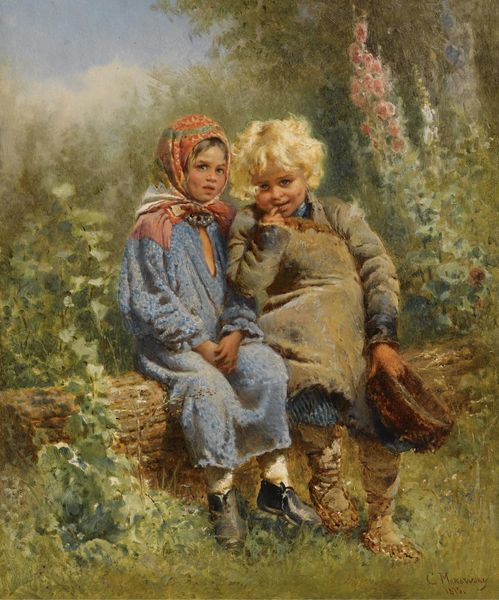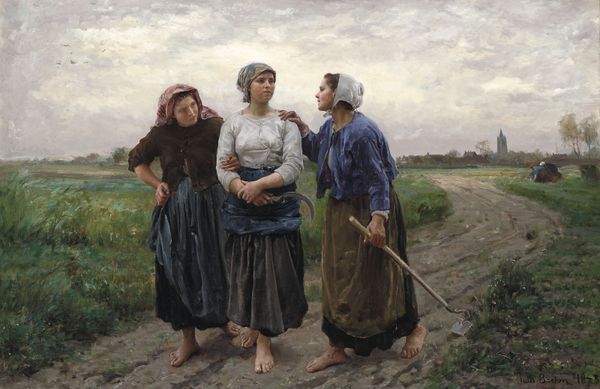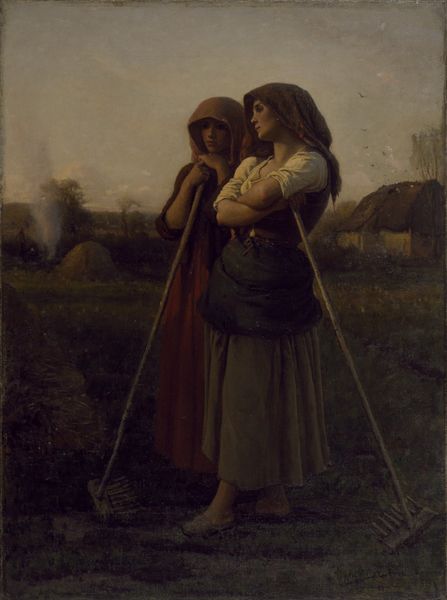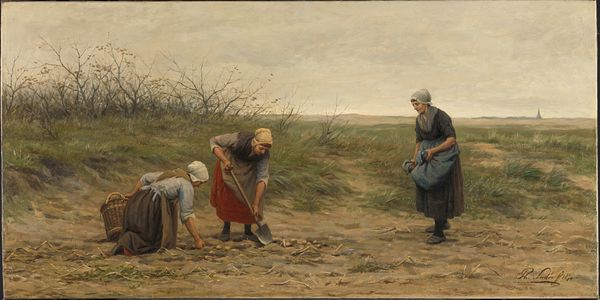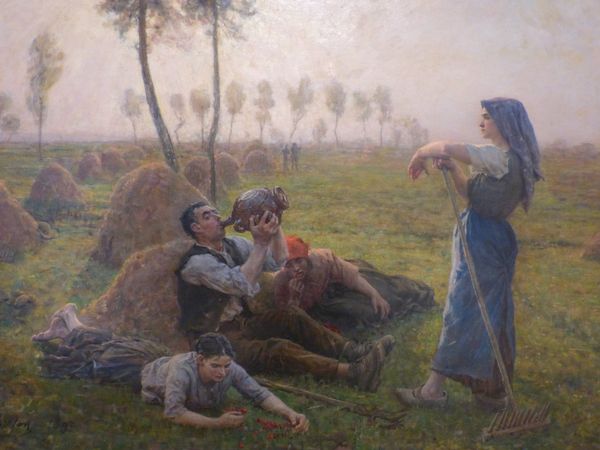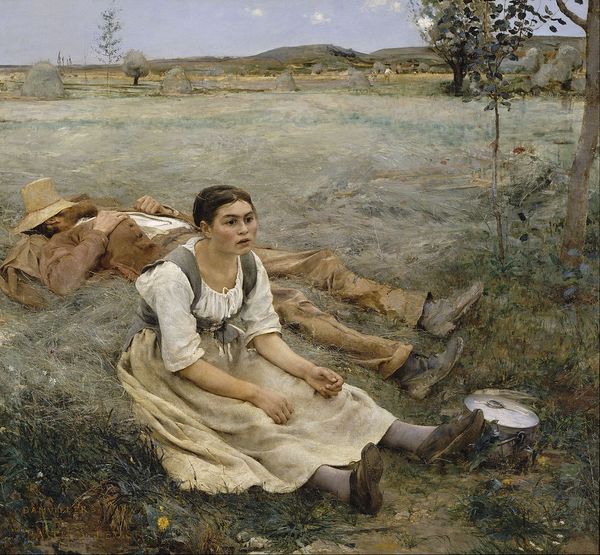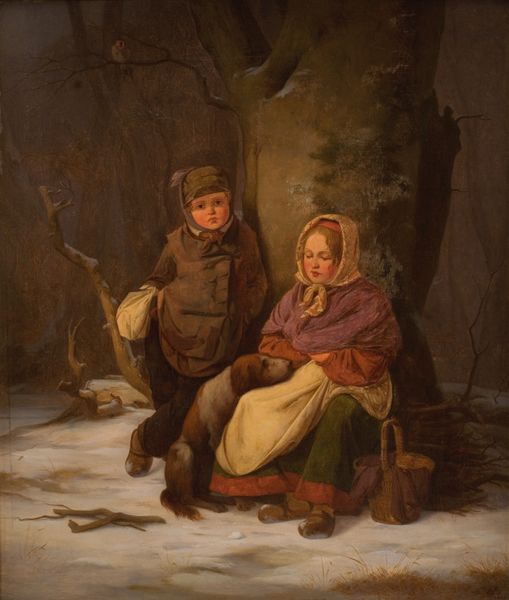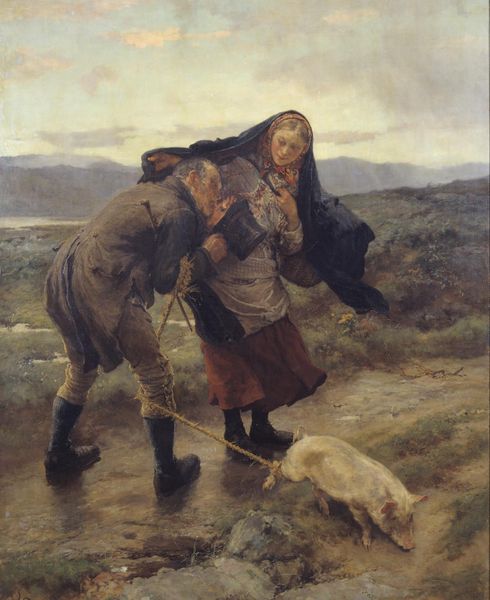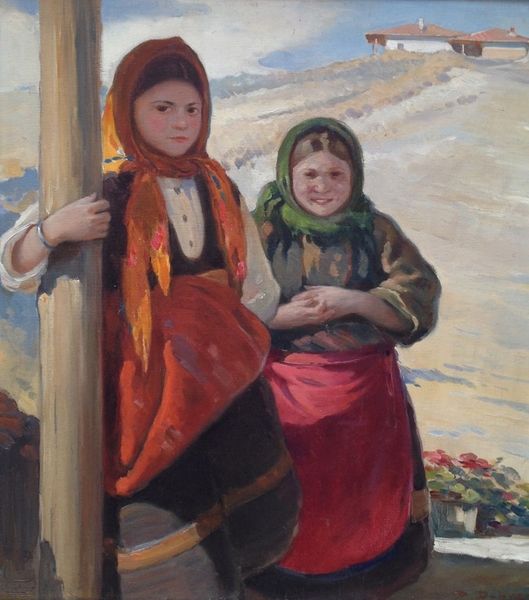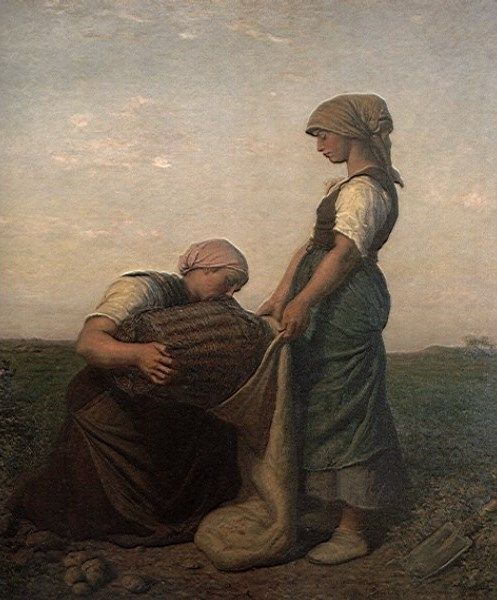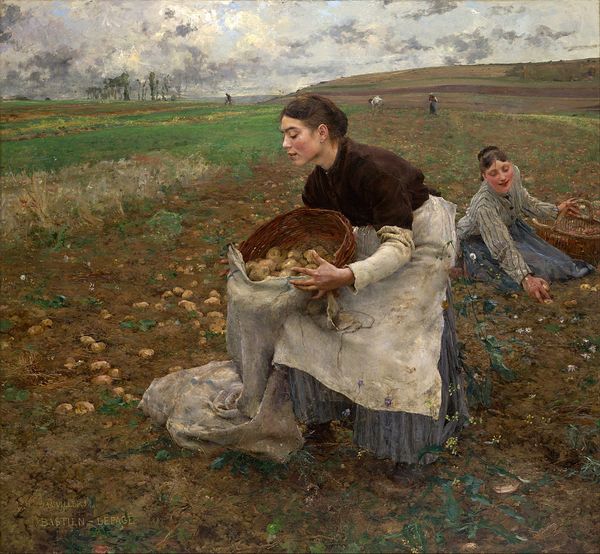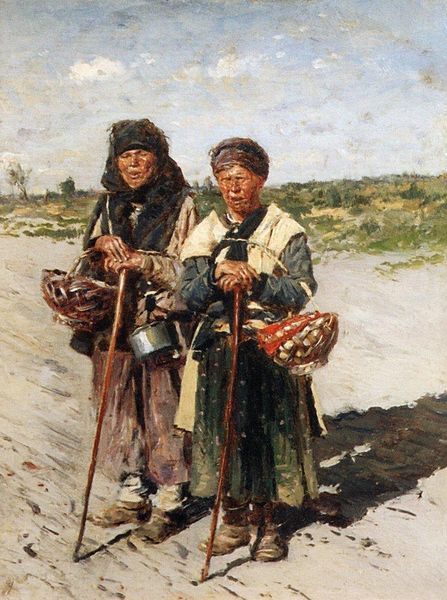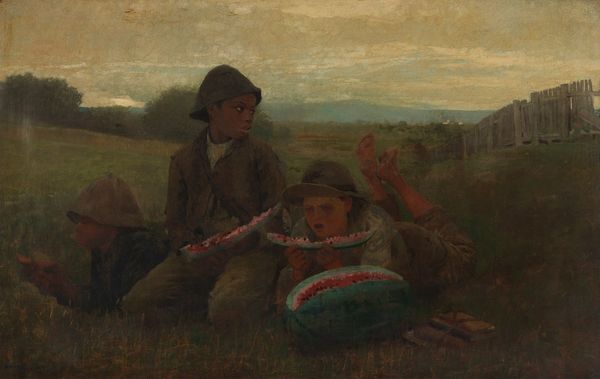
Copyright: Public domain
Curator: Here we have "Auvers-sur-Oise," a 1914 oil painting by Charles Sprague Pearce. Immediately striking is the pensive mood it evokes, this soft, overcast light... a feeling of melancholy. What’s your initial take? Editor: My eye is drawn to the two figures. They seem like young shepherds, a boy and girl sitting wearily in a field. I wonder about their story, their relationship to the land, and to each other. Their isolation is palpable. Curator: Pearce lived in France for much of his career, becoming known for genre paintings and portraits that often depicted rural life. His artistic background heavily involved American art associations like the National Academy. The choice to show rural communities wasn’t accidental; it fits into a longer thread about idealizing pre-modern traditions that took hold on both sides of the Atlantic. Editor: Precisely. The idyllic representation of the peasantry ignores the economic and social hardships they face. Though, the painting captures something human. Look at the girl’s stare into the distance, and the boy seems weary too, looking at his own hat. Perhaps that reflects their era, looking toward social tensions boiling underneath a facade of rustic simplicity. Curator: These artworks served, intentionally or unintentionally, to legitimize established societal structures at a critical point in history. The style itself—the loose brushwork, soft colors—contributes to this romantic vision, recalling earlier traditions of landscape painting. It reflects conservative elements looking back for traditional values, reinforcing existing norms within a social hierarchy through familiar settings. Editor: And that’s why considering intersectional perspectives is important here: class, gender, and their interplay with industrial development shaped not only how artists framed images but, crucially, how such images reinforce broader assumptions and prejudices across various sections of society at the time. Even small details like clothing choices convey class connotations of those presented, as they reflect historical conditions and social status of models and audiences alike. Curator: A compelling reflection of its era, but equally thought-provoking when examined through a contemporary lens. Editor: Indeed, it prompts necessary questions regarding the historical construction of art and its connection to issues we see even today.
Comments
No comments
Be the first to comment and join the conversation on the ultimate creative platform.

